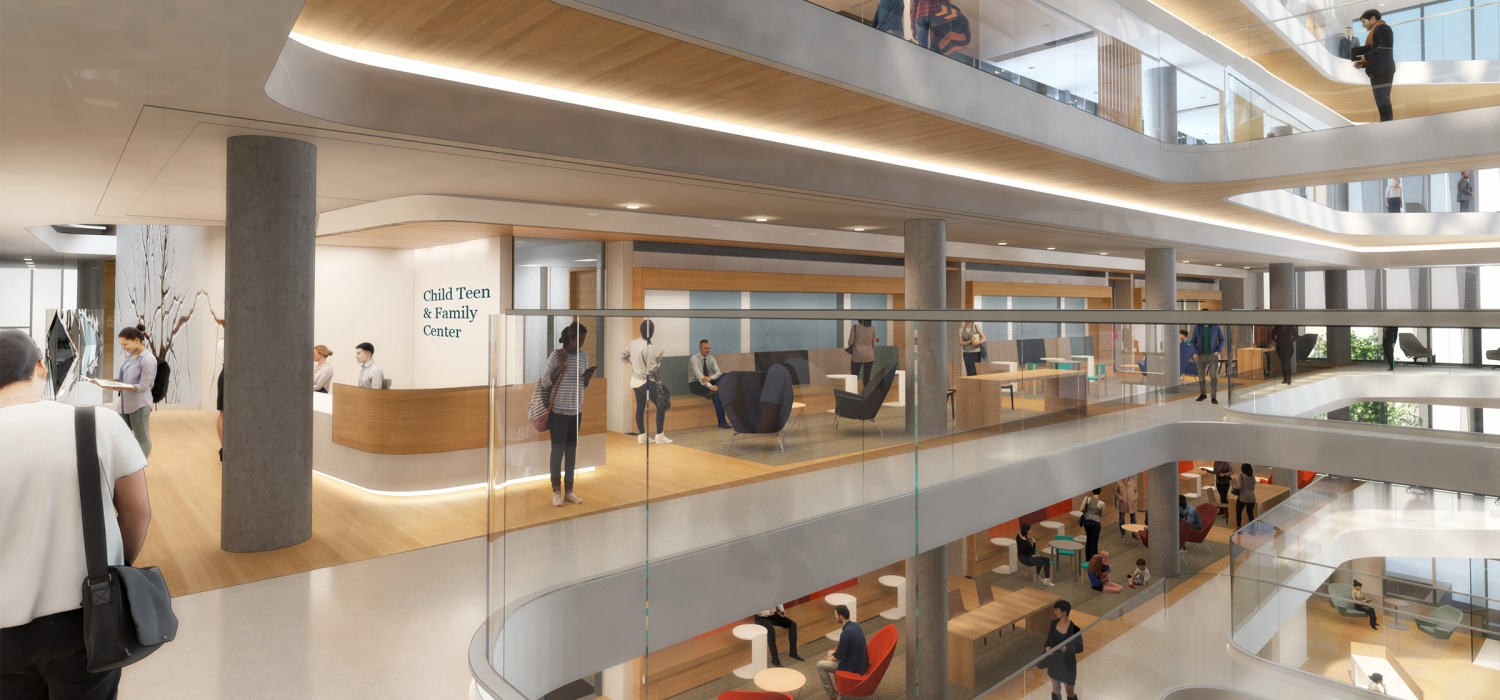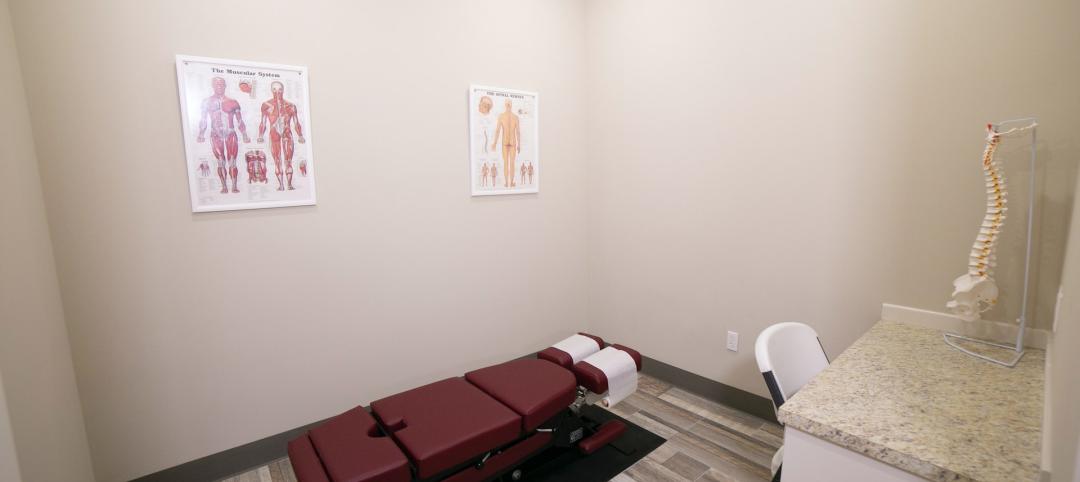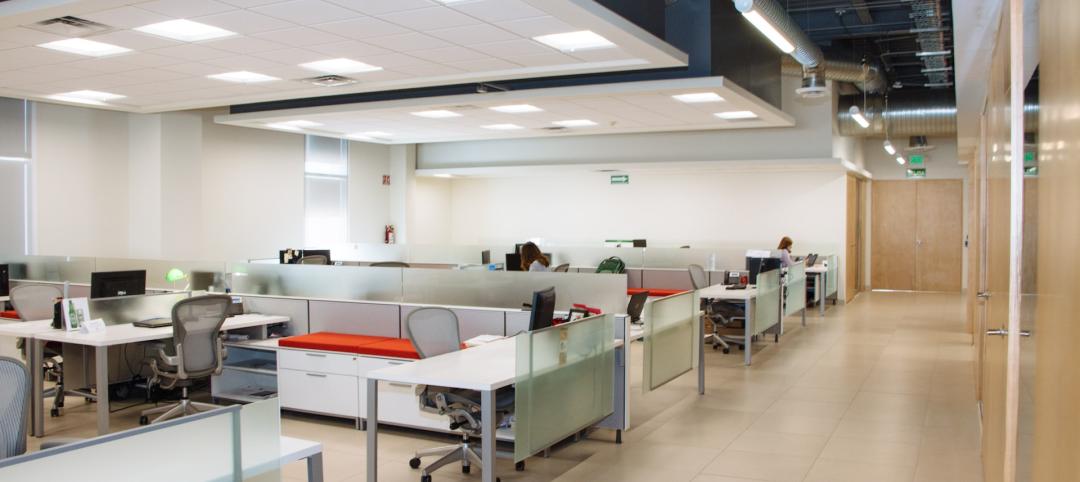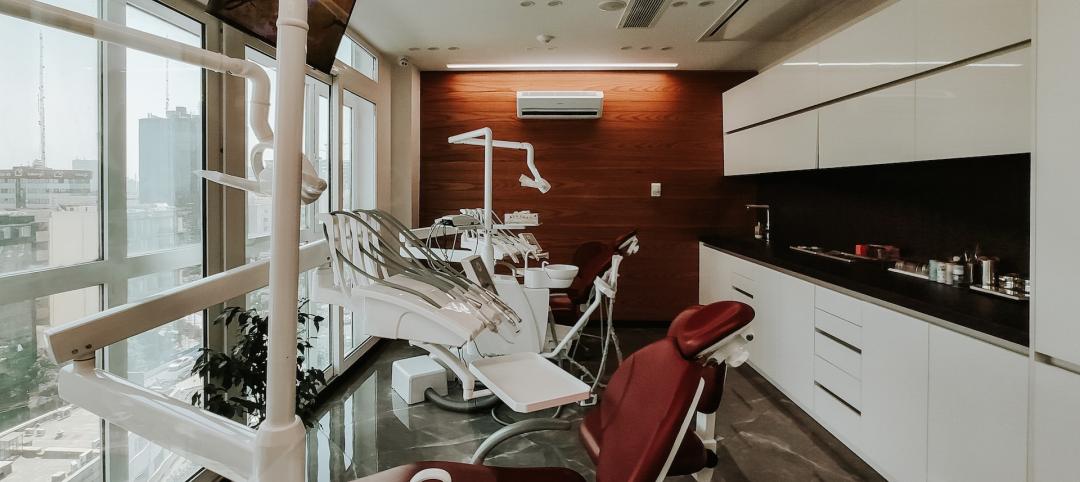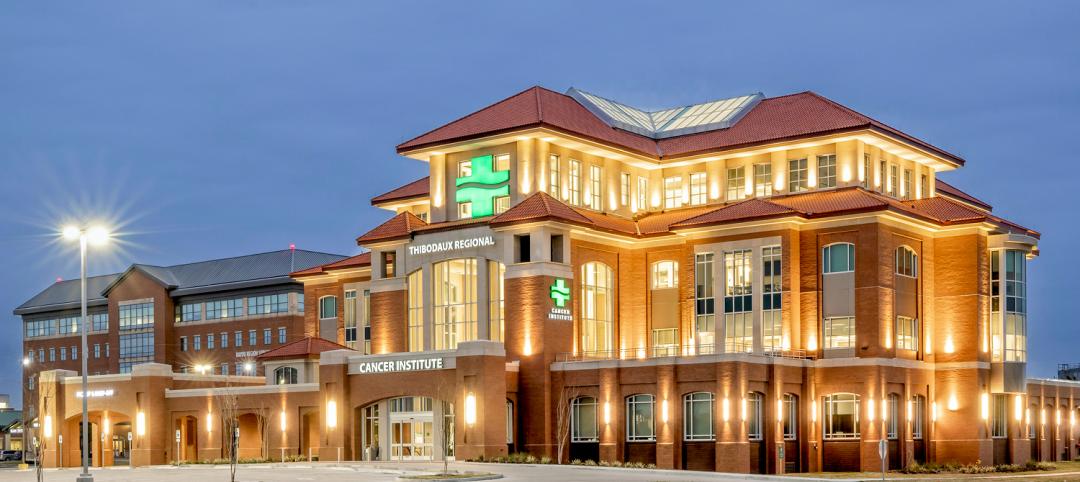Today, more than 40 million American adults suffer from a mental-health condition, and half of all chronic mental illness begins by the age of 14. Despite these overwhelming statistics, the negative stigmas associated with mental illness, combined with a scarcity of clinicians and facilities, resulted in over half of those with behavioral health conditions forgoing treatment last year.
This population is among the most marginalized in the U.S. healthcare system, but we are seeing more and better in- and out-patient and research facilities coming on line every day. What we know from recent post-occupancy evaluations and working closely with clinical staff is the critical role that design plays in removing the stigma associated with psychiatric care, normalizing the care environment, and improving patient outcomes.
Here are five ways design is transforming behavioral healthcare:
1. Transparency fosters de-stigmatization. Behavioral health clinics and institutions have long been shrouded in secrecy, perpetuating a notion that it’s shameful to receive psychiatric care.
‘The negative stigmas associated with mental illness, combined with a scarcity of clinicians and facilities, resulted in over half of behavioral health conditions forgoing treatment last year.’
— Kari Thorsen, NCIDQ, LEED AP, ZGF
For outpatients, design changes like locating the waiting room in a central corridor can send a strong message that the patient is valued and that there’s no difference between walking into a psychiatric building and any other medical building where patients are at the center of the care experience.
For example, at the University of California, San Francisco (UCSF) Child, Teen & Family Center and Department of Psychiatry Building, patient waiting rooms are located adjacent to the central atrium in a highly visible corridor.
2. Materials that evoke comfort. Behavioral and mental health facilities are often associated with institutional elements such as sterile white walls, endless linoleum hallways, and glass partitions. Conjuring images of “One Flew Over the Cuckoo’s Nest” is not uncommon.
A recent post-occupancy evaluation at the renovated Swedish Medical Center-Ballard’s Behavioral Health Unit (BHU) in Seattle found that the use of engaging colors and textures in the communal spaces are perceived as soothing and linked to positive patient experiences.
To further de-stigmatize the unit’s physical environment, existing structural columns were transformed with glass tile that feature colors and textures evoking the natural environment of the Pacific Northwest. This marks a departure from the design of older behavioral units, where columns were often wrapped in concrete and painted, leaving grooves, steel housings, and fixtures exposed.
Incorporating the use of wood, fabrics, wall coverings, and even ceramic tile—all familiar materials found in homes—into the design of inpatient and outpatient facilities can support feelings of comfort and sophistication.
3. Circadian lighting regulates calming. A growing body of research shows that tunable LED lighting—also known as circadian lighting—can support positive behaviors outcomes in settings ranging from healthcare to education. The POE findings at BHU revealed that circadian lighting in the unit’s common areas had a calming effect on patients.
This is particularly noteworthy because the unit was built within two existing hospital floors that receive little natural daylight. The circadian lighting helps synchronize patients’ natural sleep-wake rhythms, marking the passage of time and providing a sense of calm as the day winds down.
4. Naturescapes reduce anxiety. Design interventions that expose occupants to natural daylight and nature themes can reduce anxiety while also supporting an environment of safety and normalcy. At UCSF, environmental graphics referencing tree roots that grow and intertwine like neurons in the brain are intended to spur optimism and curiosity in patients that range from child to adult.
5. Design supports safety. Unlike other inpatient settings, behavioral health patients spend considerable time in commons areas with other patients and staff. Designing for visibility in corridors, common areas, group rooms, and activity rooms supports safety—as can designing for interventions that place barriers between patients and staff. At Swedish Ballard, a custom-milled, solid-surface reception desk functions as an art installation, but doubles as a barrier between patients and staff when needed.
Related Stories
Sponsored | Resiliency | Dec 14, 2022
Flood protection: What building owners need to know to protect their properties
This course from Walter P Moore examines numerous flood protection approaches and building owner needs before delving into the flood protection process. Determining the flood resilience of a property can provide a good understanding of risk associated costs.
Healthcare Facilities | Dec 14, 2022
In Flint, Mich., a new health center brings together children’s mental and physical health services
Families with children who experience behavioral health issues often have to travel to multiple care facilities to see multiple teams of specialists. In Flint, Mich., the new Center for Children’s Integrated Services at Genesee Health System (GHS), a public mental health provider, brings together all of the GHS children’s programs, including its behavioral health programs, under one roof. It provides families a single destination for their children’s mental healthcare.
Adaptive Reuse | Dec 9, 2022
What's old is new: Why you should consider adaptive reuse
While new construction allows for incredible levels of customization, there’s no denying that new buildings can have adverse impacts on the climate, budgets, schedules and even the cultural and historic fabrics of communities.
Healthcare Facilities | Nov 17, 2022
Repetitive, hotel-like design gives wings to rehab hospital chain’s rapid growth
The prototype design for Everest Rehabilitation Hospitals had to be universal enough so it could be replicated to accommodate Everest’s expansion strategy.
Seismic Design | Nov 16, 2022
SPC-4D: 7 reasons California hospital building owners should act now to meet seismic compliance
Seismic compliance with the applicable California building codes is onerous and disruptive for building owners, especially for a building in the heavily regulated sector of healthcare. Owners of older buildings that house acute care services have a big deadline on the horizon—Jan. 1, 2030, the cutoff date to upgrade their buildings to SPC-4D.
BAS and Security | Oct 19, 2022
The biggest cybersecurity threats in commercial real estate, and how to mitigate them
Coleman Wolf, Senior Security Systems Consultant with global engineering firm ESD, outlines the top-three cybersecurity threats to commercial and institutional building owners and property managers, and offers advice on how to deter and defend against hackers.
Giants 400 | Oct 6, 2022
Top 60 Medical Office Building Contractors + CM Firms for 2022
PCL Construction, Adolfson & Peterson, Swinerton, and Skanska USA top the ranking of the nation's largest medical office building (MOB) contractors and construction management (CM) firms for 2022, as reported in Building Design+Construction's 2022 Giants 400 Report.
Giants 400 | Oct 6, 2022
Top 50 Medical Office Building Engineering + EA Firms for 2022
Jacobs, Gresham Smith, KPFF Consulting Engineers, and IMEG Corp. head the ranking of the nation's largest medical office building (MOB) engineering and engineering/architecture (EA) firms for 2022, as reported in Building Design+Construction's 2022 Giants 400 Report.
Giants 400 | Oct 6, 2022
Top 100 Medical Office Building Architecture + AE Firms for 2022
CannonDesign, Perkins Eastman, HGA, and E4H Environments for Health Architecture top the ranking of the nation's largest medical office building (MOB) architecture and architecture/engineering (AE) firms for 2022, as reported in Building Design+Construction's 2022 Giants 400 Report.
Giants 400 | Oct 6, 2022
Top 60 Outpatient Facility Contractors + CM Firms for 2022
Whiting-Turner Contracting Co., PCL Construction, Skanska USA, and Power Construction top the ranking of the nation's largest outpatient facility contractors and construction management (CM) firms for 2022, as reported in Building Design+Construction's 2022 Giants 400 Report.


